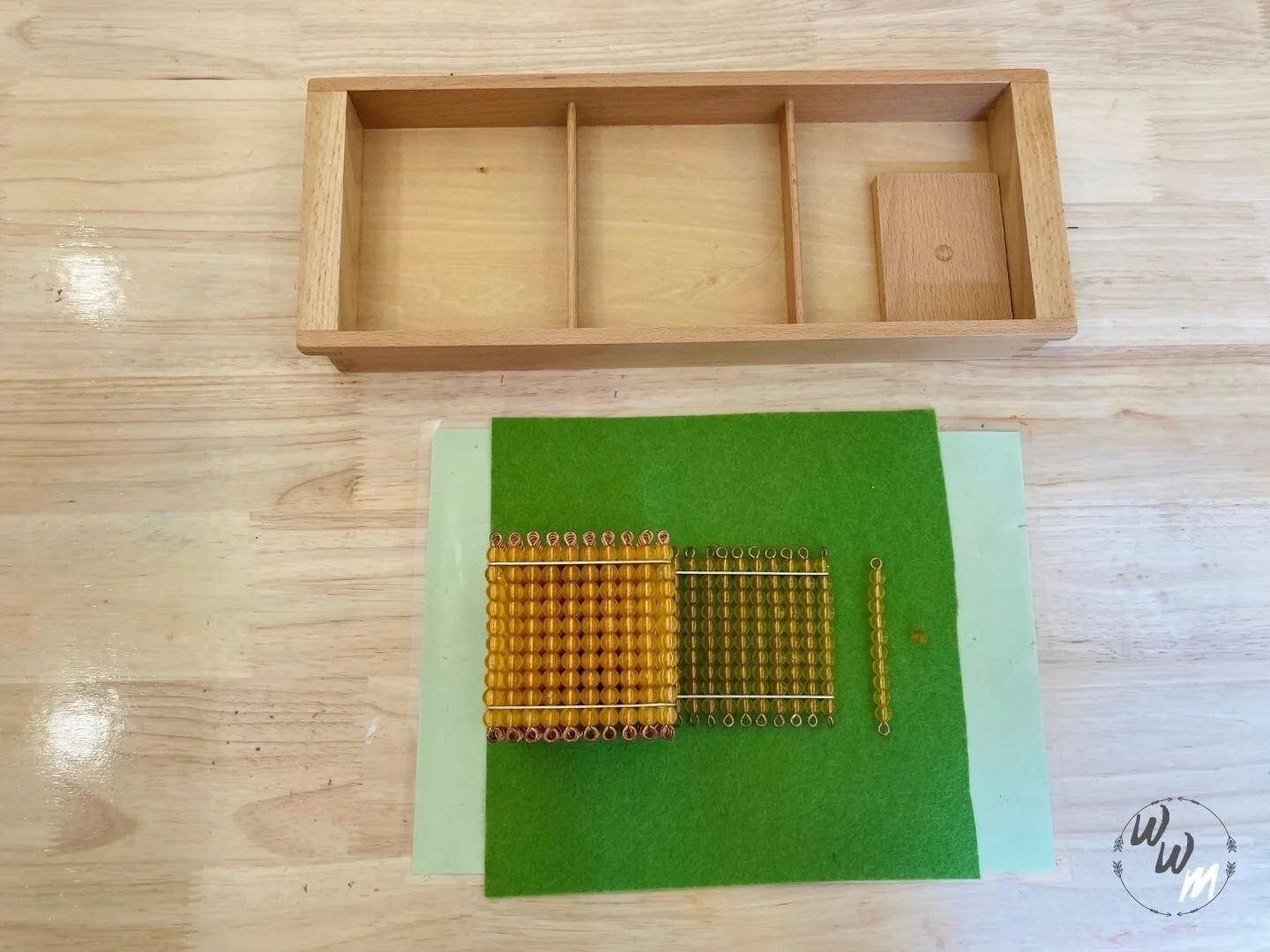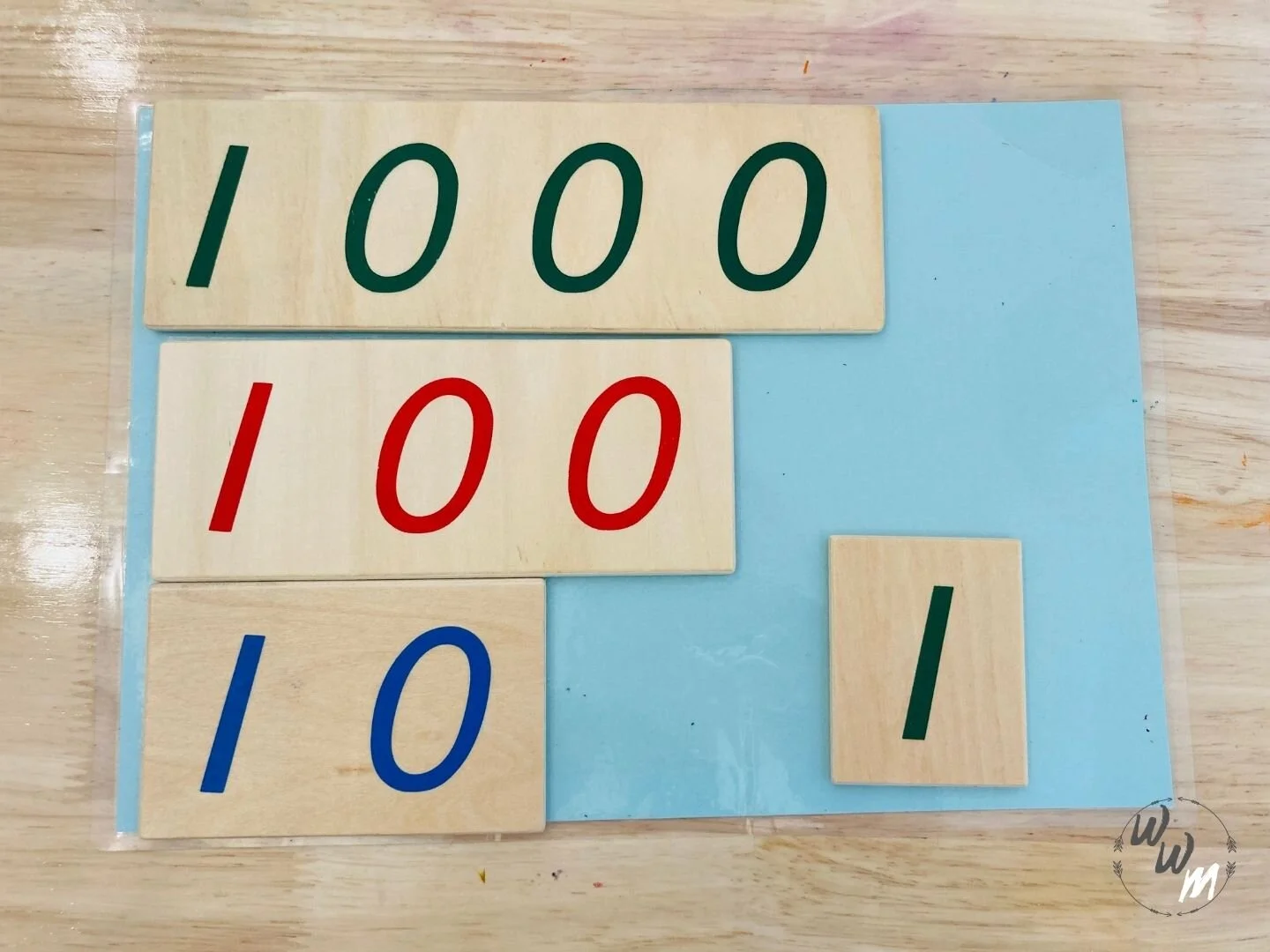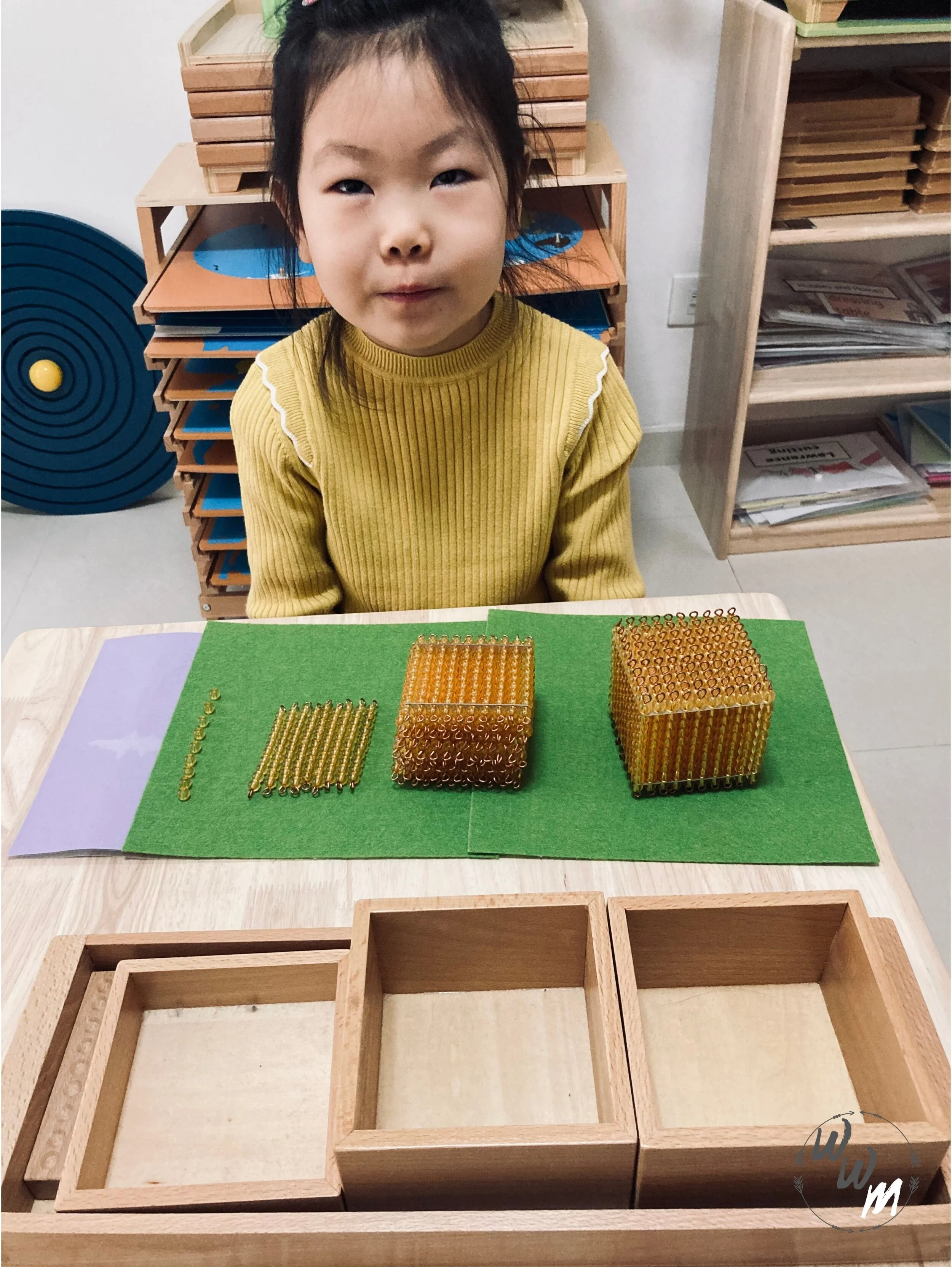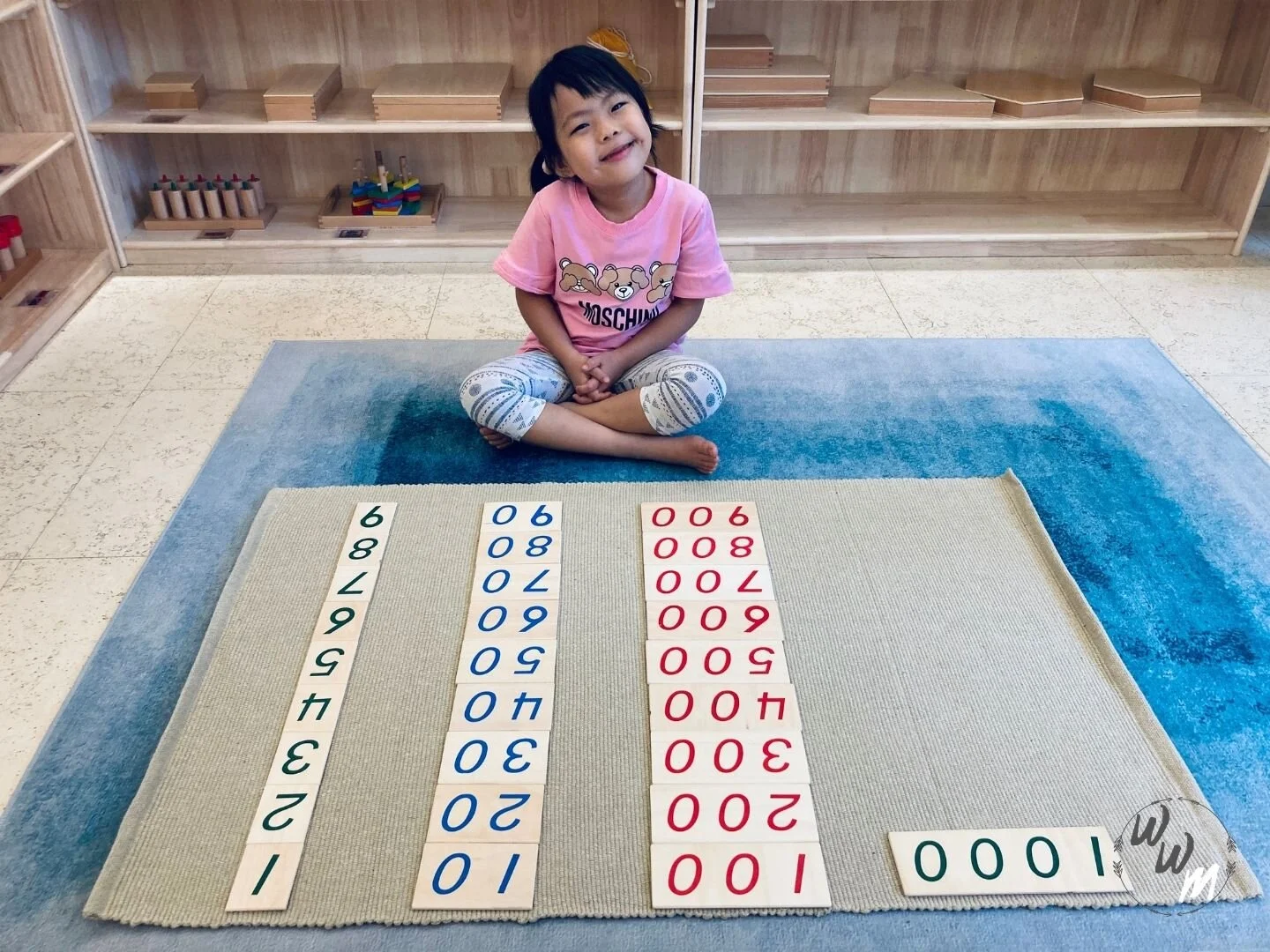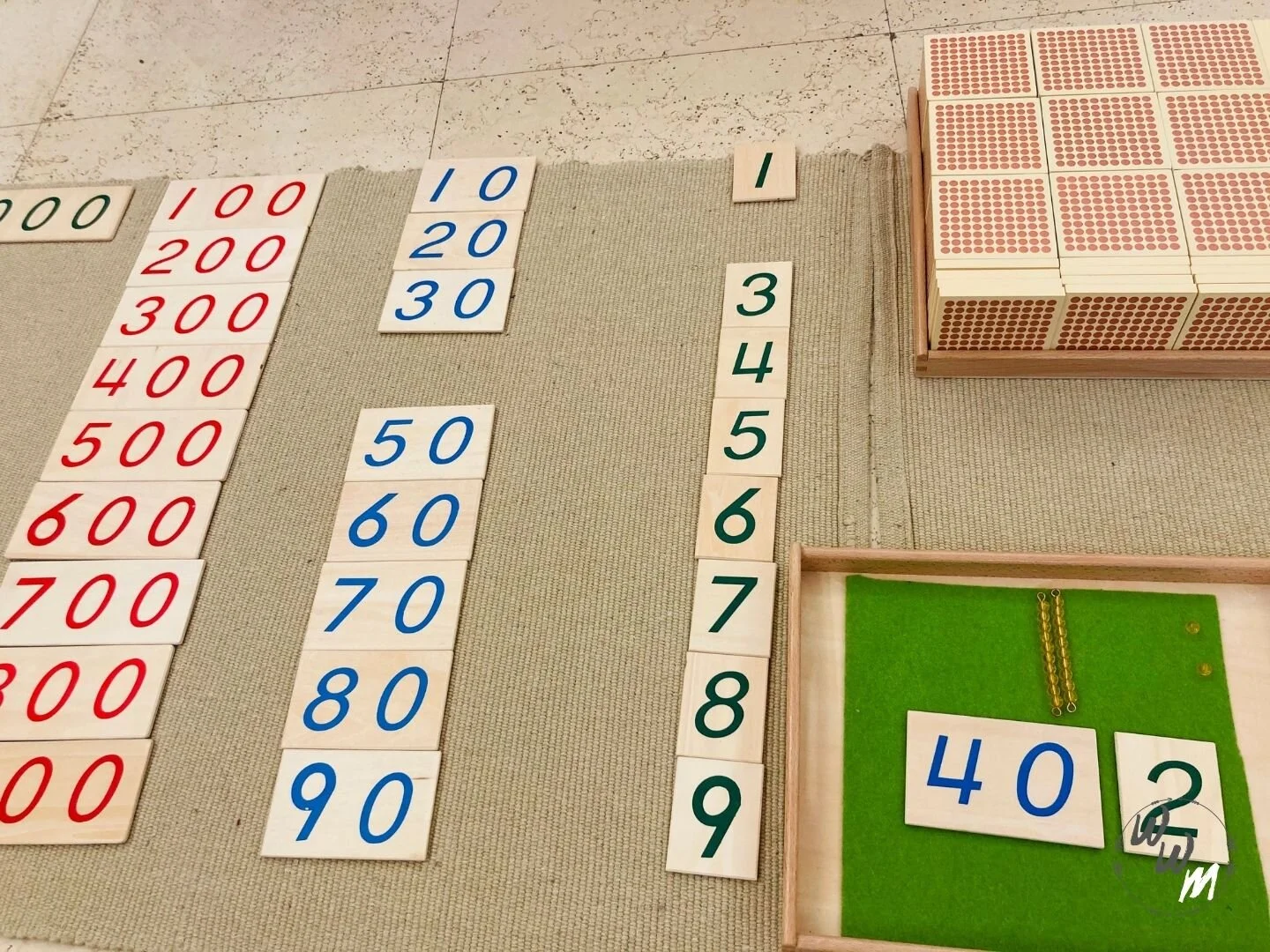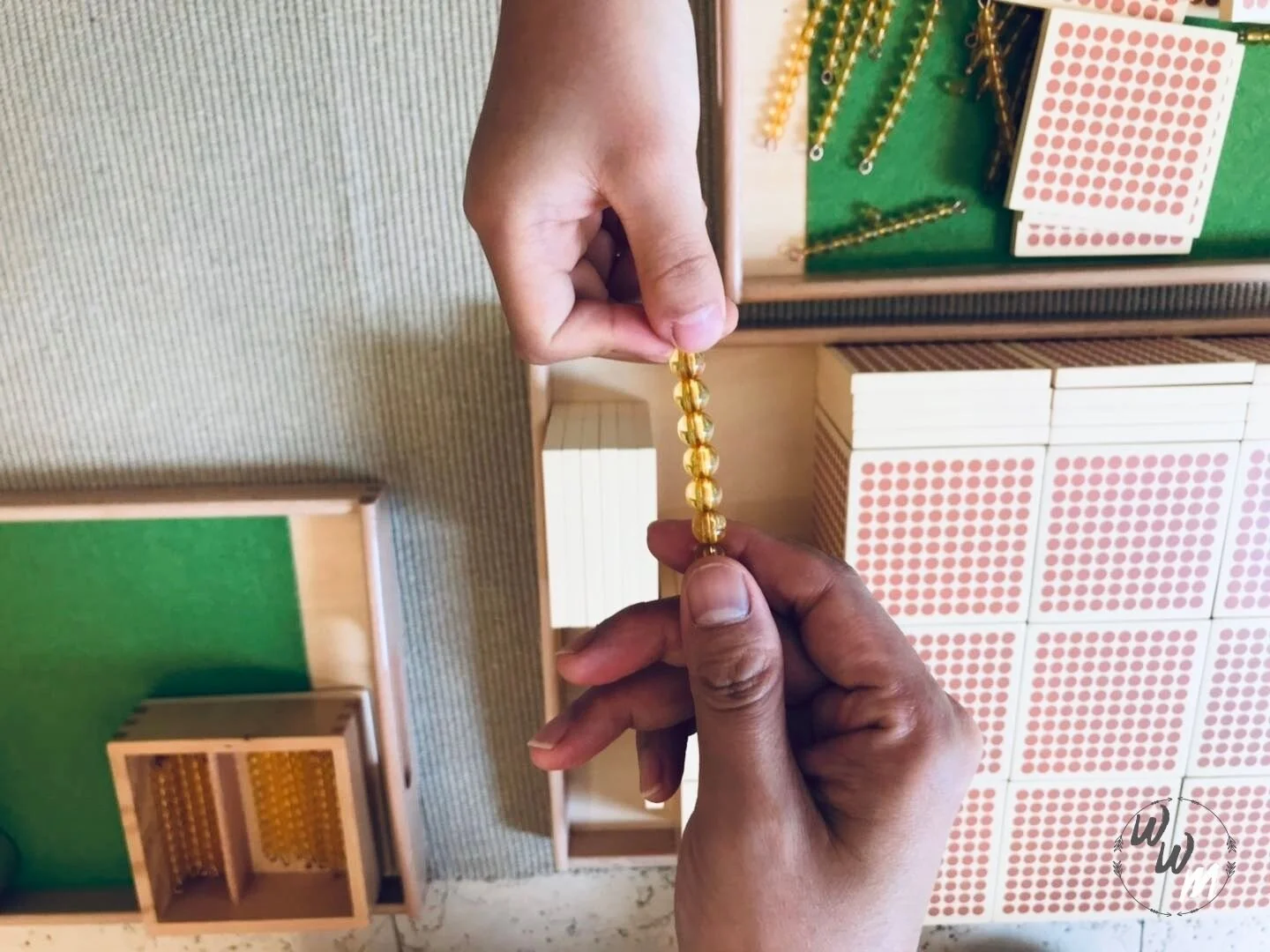Introduction to the Decimal System: The Golden Beads
In Montessori, we always begin with teaching the child with more concrete materials and move onto more abstract materials. In Montessori, we introduce numerals of the Decimal System to the child in early Montessori Math lessons. In this area of math, the child is introduced to zero as a place value. The Golden Beads are fascinating for all children and helps them learn concepts easily.
The various activities in the Math area of a Montessori classroom that introduces the child to the Decimal System are as follows:
Presentation Tray
This activity is a wonderful introduction to the decimal system in Montessori. All children love working with the Golden Beads, and soon realize that they are not toys, but have a key educational purpose in the classroom. This activity is done by the directress doing a three-period lesson with the child. The child learns units, tens, hundreds, and thousands using the Golden Beads in a very ‘concrete’ way.
Large Number Cards
The aim of this activity is to teach the child the written numbers for 1, 10, 100, and 1000. The directress does a three-period lesson with the Montessori Large Number Cards. The child learns how to identify one unit, one ten, one hundred, and one thousand in a more ‘abstract’ way.
Bridging exercise between the Presentation Tray and the Large Number Cards
This activity is done with the Montessori Presentation Tray and the Large Number Cards. The aim of this activity is to match the Golden Beads to their corresponding Large Number Cards. This activity prepares the child for maths done later on, as well as this activity gives the child further practice in recognizing one unit, one ten, one hundred, and one thousand in the ‘concrete’ and ‘abstract’ form.
Counting through with the Golden Beads
This activity encourages the child to count the beads from the Presentation Tray, from the units - which contain nine-unit beads; tens - which contain nine ten-bead bars; hundreds - which contain nine hundred bead squares; and thousands - which contain one thousand cube. This is a wonderful activity for the child to understand various concepts in this area in a more ‘concrete’ form.
Bring me game with the Golden Beads
This is a fun Montessori maths activity that is usually done in groups. The child will be asked to layout the unit beads on the far right-hand side of the floor mat, with the tens, hundreds, and thousands following successfully to the left of the units. This activity is done by the directress asking the child to bring her the various quantities she asks for, starting with small amounts, gradually increasing in difficulty.
Counting through with the Large Number Cards
This Montessori Math activity is presented in the same manner as ‘Counting through with the Golden Beads’ activity. This one differs, as the child is encouraged to count through with the Large Number Cards instead of the beads. This activity is more difficult as the child is now working with more ‘abstract’ materials.
Bring me game with the Large Number Cards
This activity is very similar to the ‘Bring me game with the Golden Beads’, this one differs as the child will be encouraged to bring the directress the Large Number Cards instead. This activity is more difficult, as the child will be working with more abstract materials (number cards).
Birds Eye View
In this Montessori Math activity, the directress will show the child how to match the correct ‘concrete’ number (Golden Beads). An example of this activity is as follows: the number card nine will have nine-unit beads to the right of the card, and the number card 50 will have five-ten bead-bars to the right of the card, etc. This activity helps the child associate the ‘concrete’ amount with the correct numerals.
Banking Game
This Montessori Math activity is done in groups. The directress will give one child a certain number of beads on a tray, the child will then be asked to go and fetch the corresponding number card from the ‘banker’. This a fun activity that children generally enjoy. It gives the child further practice in finding specific amounts.
The Changing Game
This math activity is usually done in groups. The main aim of this Montessori Math exercise is to teach children to form numbers from an unlimited amount of beads. This activity also encourages children to change hierarchies once reaching ten. This is a wonderful activity that develops the child’s gross and fine motor movements. It also reinforces the exchanging of hierarchies and prepares the child for dynamic operations.

